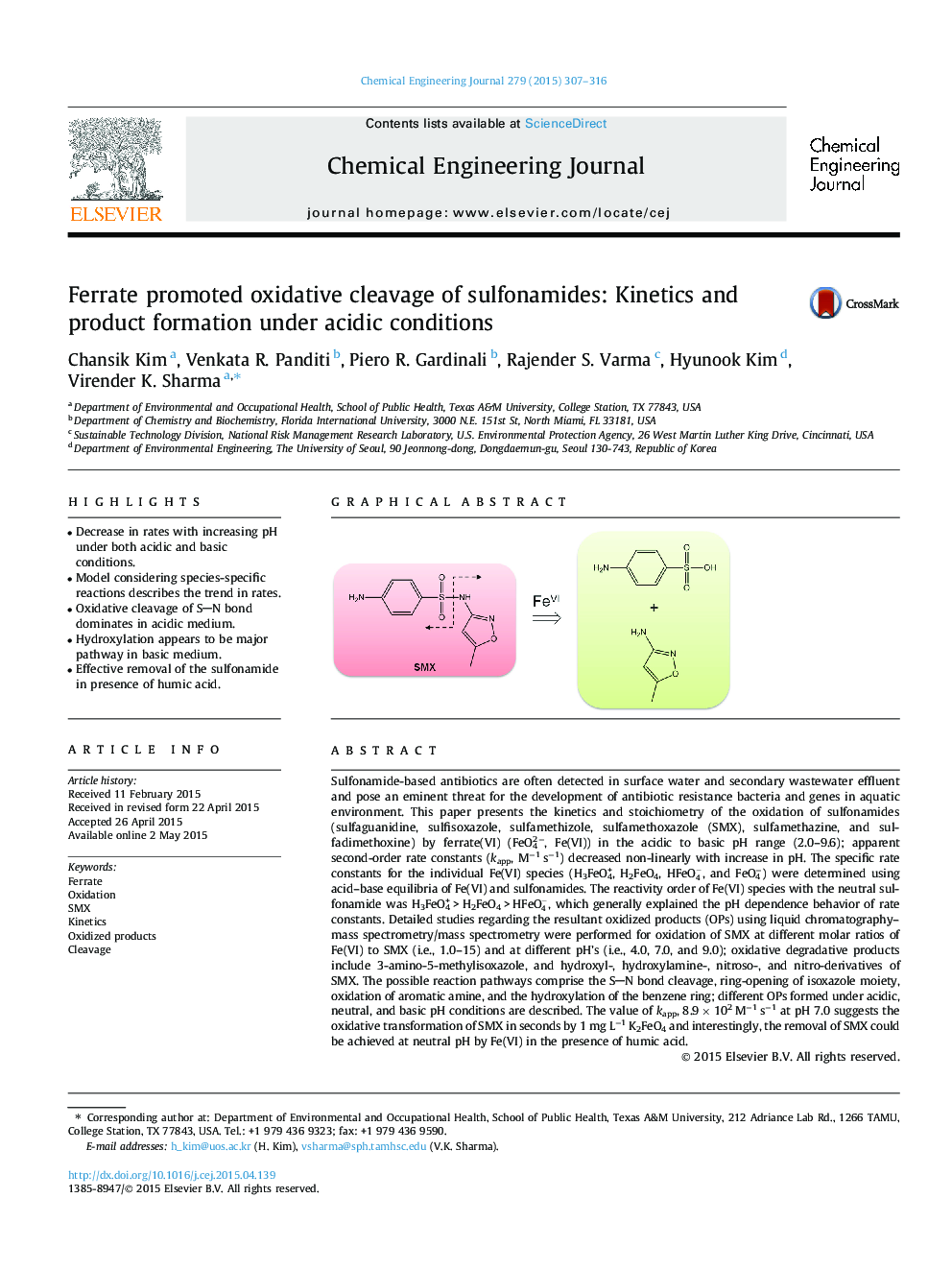| کد مقاله | کد نشریه | سال انتشار | مقاله انگلیسی | نسخه تمام متن |
|---|---|---|---|---|
| 146075 | 456362 | 2015 | 10 صفحه PDF | دانلود رایگان |

• Decrease in rates with increasing pH under both acidic and basic conditions.
• Model considering species-specific reactions describes the trend in rates.
• Oxidative cleavage of SN bond dominates in acidic medium.
• Hydroxylation appears to be major pathway in basic medium.
• Effective removal of the sulfonamide in presence of humic acid.
Sulfonamide-based antibiotics are often detected in surface water and secondary wastewater effluent and pose an eminent threat for the development of antibiotic resistance bacteria and genes in aquatic environment. This paper presents the kinetics and stoichiometry of the oxidation of sulfonamides (sulfaguanidine, sulfisoxazole, sulfamethizole, sulfamethoxazole (SMX), sulfamethazine, and sulfadimethoxine) by ferrate(VI) (FeO42−, Fe(VI)) in the acidic to basic pH range (2.0–9.6); apparent second-order rate constants (kapp, M−1 s−1) decreased non-linearly with increase in pH. The specific rate constants for the individual Fe(VI) species (H3FeO4+, H2FeO4, HFeO4-, and FeO4−) were determined using acid–base equilibria of Fe(VI) and sulfonamides. The reactivity order of Fe(VI) species with the neutral sulfonamide was H3FeO4+ > H2FeO4 > HFeO4-, which generally explained the pH dependence behavior of rate constants. Detailed studies regarding the resultant oxidized products (OPs) using liquid chromatography–mass spectrometry/mass spectrometry were performed for oxidation of SMX at different molar ratios of Fe(VI) to SMX (i.e., 1.0–15) and at different pH’s (i.e., 4.0, 7.0, and 9.0); oxidative degradative products include 3-amino-5-methylisoxazole, and hydroxyl-, hydroxylamine-, nitroso-, and nitro-derivatives of SMX. The possible reaction pathways comprise the SN bond cleavage, ring-opening of isoxazole moiety, oxidation of aromatic amine, and the hydroxylation of the benzene ring; different OPs formed under acidic, neutral, and basic pH conditions are described. The value of kapp, 8.9 × 102 M−1 s−1 at pH 7.0 suggests the oxidative transformation of SMX in seconds by 1 mg L−1 K2FeO4 and interestingly, the removal of SMX could be achieved at neutral pH by Fe(VI) in the presence of humic acid.
Figure optionsDownload as PowerPoint slide
Journal: Chemical Engineering Journal - Volume 279, 1 November 2015, Pages 307–316